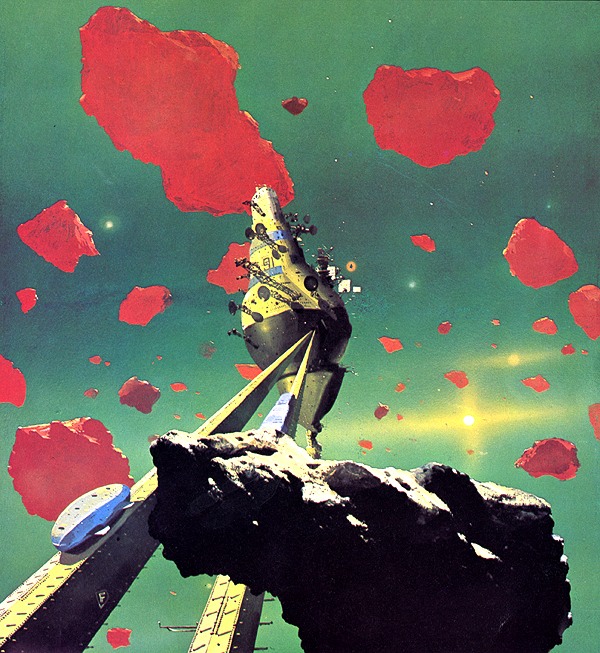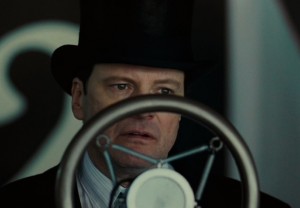
We have always loved making our computers perform. I don’t say “machines” — brute mechanization is too broad a category, our history with industrialization too long (and full of skeletons). Too many technological agents reside below the threshold of our consciousness: the dumb yet surgically precise robots of the assembly line, the scrolling tarmac of the grocery-store checkout counter that delivers our purchases to another unnoticed workhorse, the cash register. The comfortable trance of capitalism depends on labor’s invisibility, and if social protocols command the human beings on either side of transactions to at least minimally acknowledge each other — in polite quanta of eye contact, murmured pleasantries — we face no such obligation with the machines to whom we have delegated so much of the work of maintaining this modern age.
But computers have always been stars, and we their anxious stage parents. In 1961 an IBM 704 was taught to sing “Daisy Bell” (inspiring a surreal passage during HAL’s death scene in 2001: A Space Odyssey), and in 1975 Steve Dompier made his hand-built Altair 8800 do the same, buzzing tunes through a radio speaker at a meeting of the Homebrew Computer Club, an early collective of personal-computing enthusiasts. I was neither old enough nor skilled enough to take part in that initial storm surge of the microcomputer movement, but like many born in the late 1960s, was perfectly poised to catch the waves that crashed through our lives in the late 70s and early 80s: the TRS-80, Apple II, and Commodore PET; video arcades; consoles and cartridges for playing at home, hooked to the TV in a primitive convergence between established and emerging technologies, conjoined by their to-be-looked-at-ness.
Arcade cabinets are meant to be clustered around, joysticks passed around an appreciative couchbound audience. Videogames of any era show off the computer’s properties and power, brightly blipping messages whose content, reversing McLuhan, is new media, presenting an irresistible call both spectacular and interactive to any nerds within sensory range. MIT’s Spacewar worked both as game and graphics demo, proof of what the state of the art in 1962 could do: fifty years later, the flatscreens of Best Buy are wired to Wiis and PlayStation 3s, beckoning consumers in endless come-on (which might be one reason why the games in so many franchises have become advertisements for themselves).
But the popular allure of computers isn’t only in their graphics and zing. We desire from them not just explorable digital worlds but minds and souls themselves: another sentient presence here on earth, observing, asking questions, offering commentary. We want, in short, company.
Watson, the IBM artifact currently competing against champions Ken Jennings and Brad Rutter on Jeopardy, is the latest digital ingenue to be prodded into the spotlight by its earnest creators (a group that in reaction shots of the audience appears diverse, but whose public face in B-roll filler sums to the predictable type: white, bespectacled, bearded, male). Positioned between Jennings and Rutter, Watson is a black slab adorned with a cheerful logo, er, avatar, conveying through chance or design an uneasy blend of 2001‘s monolith and an iPad. In a nearby non-space hums the UNIVAC-recalling bulk of his actual corpus, affixed to a pushbutton whose humble solenoid — to ring in for answers — is both a cute nod to our own evolution-designed hardware and a sad reminder that we still need to even the playing field when fighting Frankenstein’s Monster.
There are two important things about Watson, and despite the technical clarifications provided by the informational segments that periodically and annoyingly interrupt the contest’s flow, I find it almost impossible to separate them in my mind. Watson knows a lot; and Watson talks. Yeats asked, “How can we know the dancer from the dance?” Watson makes me wonder how much of the Turing Test can be passed by a well-designed interface, like a good-looking kid in high school charming teachers into raising his grades. Certainly, it is easy to invest the AI with a basic identity and emotional range based on his voice, whose phonemes are supplied by audiobook narrator Jeff Woodman but whose particular, peculiar rhythms and mispronunciations — the foreign accent of speech synthesis, as quaint as my father’s Czech-inflected English — are the quirky epiphenomena of vast algorithmic contortions.
Another factor in the folksiness of Watson is that he sounds like a typical Jeopardy contestant — chirpy, nervous, a little full of himself — and so highlights the vaguely androidish quality of the human players. IBM has not just built a brain in a box; they’ve built a contestant on a TV game show, and it was an act of genius to embed this odd cybernetic celebrity, half quick-change artist, half data-mining savant, in the parasocial matrix of Alex Trebek and his chronotypic stage set: a reality already half-virtual. Though I doubt the marketing forces at IBM worried much about doomsday fears of runaway AIs, the most remarkable thing about Watson may be how benign he seems: an expert, and expertly unthreatening, system. (In this respect, it’s significant that the computer was named not for the brilliant and erratic Sherlock Holmes, but his perpetually one-step-behind assistant.)
Before the competition started, I hadn’t thought much about natural-language processing and its relationship to the strange syntactic microgenre that is the Jeopardy question. But as I watched Watson do his weird thing, mixing moronic stumbles with driving sprints of unstoppable accuracy, tears welled in my eyes at the beautiful simplicity of the breakthrough. Not, of course, the engineering part — which would take me several more Ph.D.s (and a whole lotta B-roll) to understand — but the idea of turning Watson into one of TV’s limited social beings, a plausible participant in established telerituals, an interlocutor I could imagine as a guest on Letterman, a relay in the quick-moving call-and-response of the one quiz show that has come to define, for a mass audience, high-level cognition, constituted through a discourse of cocky yet self-effacing brilliance.
Our vantage point on Watson’s problem-solving process (a window of text showing his top three answers and level of confidence in each) deromanticizes his abilities somewhat: he can seem less like a thinking agent than an overgrown search engine, a better-behaved version of those braying “search overload” victims in the very obnoxious Bing ads. (Tip to Microsoft: stop selling your products by reminding us how much it is possible to hate them.) But maybe that’s all we are, in the end: social interfaces to our own stores of internal information and experience, talkative filters customized over time (by constant interaction with other filters) to mistake ourselves for ensouled humans.
At the end of the first game on Tuesday night, Watson was ahead by a mile. We’ll see how he does in the concluding round tonight. For the life of me, I can’t say whether I want him to win or to lose.







